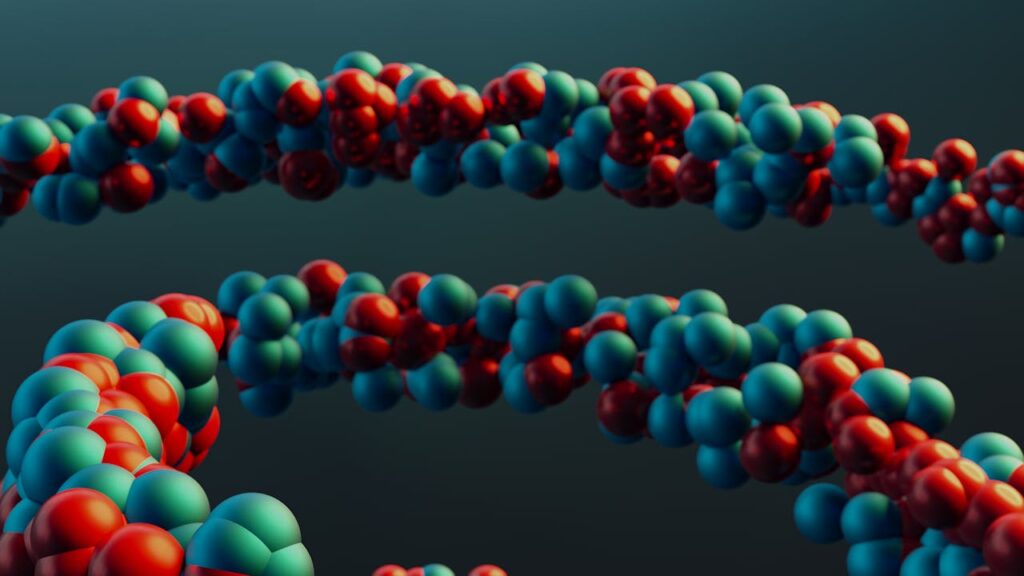Table of Contents
ToggleFrom early recognition to genetic variants and the new international criteria
Neurofibromatosis (NF) is the name for a group of related but distinct genetic disorders that affect the body in various complex and unpredictable ways. Individuals with NF are prone to the growth of tumours along nerves, and depending on the specific development of these tumours, there may be difficulties with the skin, vision, hearing, learning, or neurological function [1].
Given that symptoms commonly present early in life and follow a progressive course, early identification is key for improved management and outcomes [2]. For anyone in the field of healthcare—from genetics to counselling to diagnosis—the importance of knowing about neurofibromatosis is not simply to diagnose. It also means:
- advising families on monitoring protocols
- personalized treatment choices
- long-term care plans [3]
Beyond electronic health records and clinical informatics, in the context of carrier screening and clinical genetics, NF illustrates the relevance of:
- prompt genetic analysis
- variant classification in patient-centred care [4]
Understanding Neurofibromatosis
NF is divided into three major clinical phenotypes, and most people can be characterized according to the features and implications of these phenotypes [5].
- The most frequent type, NF1, is estimated to affect around 1 in 3,000 people and is ordinarily diagnosed in childhood due to characteristic skin manifestations, non-cancerous nerve tumours, as well as potential learning problems [6].
- Less common is Neurofibromatosis 2, which is predominantly distinguished by the presence of bilateral vestibular schwannomas – growths on the vestibular nerve that may cause hearing loss and balance problems [7].
- The third type, Schwannomatosis, is even less common and generally involves painful tumours on peripheral nerves, but unlike Neurofibromatosis 1 and NF2, it displays no hallmark symptoms [8].
While differing significantly from each other, all three presentations have one feature in common: a genetic predisposition to nervous system tumours, often requiring a lifetime of multidisciplinary care [9].
Genetic Causes and Inheritance
Inherited neurofibromatosis is caused by mutations in tumour suppressor genes:
- NF1
- NF2
- SMARCB1
- LZTR1
that help control cell growth and signalling [10]. These conditions are inherited in an autosomal dominant manner, so if a parent presents with the disorder, their offspring’s risk is 50% [11]. However, many cases are attributed to new mutations (called de novo), so genetic testing is crucial even if there is no known family history.

The Importance of Early Diagnosis and Counselling
Recognizing NF early can prevent complications and inform timely medical decisions. For example, children with NF1 require:
- regular eye tests to monitor for optic pathway gliomas
- undergo developmental assessments [12]
Some people with NF2 require regular MRI scans to detect tumours before hearing loss or balance problems become noticeable.
Genetic counselling is equally as important, helping families gain a better understanding of how NF is passed down, whether risks are present for subsequent children and what type of support is available [13]. Such personal advice not only benefits the person diagnosed but also leads to early identification and intervention for family members who may be carrying the same mutation [14].
Genetic Testing and Interpretation Platforms
Thanks to technological advancements, NGS sequencing (Next-Generation Sequencing) is currently thriving. This approach:
- simplifies,
- speeds,
- and dramatically reduces the cost of simultaneously identifying multiple gene variants,
- provides more accurate diagnoses,
- and enables more informed treatment plans.
Adhering to guidelines and population databases, reading platforms today are capable of providing clear, dependable reports for patients and clinicians. InheriNext® enhances this process by offering rapid, transparent variant interpretation within minutes, supporting clinical decision-making with confidence and efficiency.
Genetic Testing and Interpretation Platforms (continued)
The diagnosis is frequently based on molecular genetic testing. In cases with ambiguous clinical signs, sequencing of the NF1, NF2, SMARCB1, or LZTR1 genes can detect pathogenic variations [15].
The increasing deployment of advanced variant interpretation platforms has also facilitated more context-appropriate clinical decision-making through the application of:
- standardized classification guidelines
- the addition of functional and population-level data
- correlation with transparent and actionable reporting
Conclusion
Neurofibromatosis highlights the impact of genetics on preventive care. Early detection, comprehensive testing, and serious considerations of variant interpretation can help optimize outcomes and lifelong quality of life. In the month of Inherited Disease Awareness, NF presents as a reminder of the importance of precision medicine, early detection, and team-based care for those suffering from inherited diseases.
Related: Fragile X Syndrome – From Genetics to Lifelong Support explores the full diagnostic journey and how InheriNext® supports clinical decisions
REFERENCES
- Tamura R. Current Understanding of Neurofibromatosis Type 1, 2, and Schwannomatosis. Int J Mol Sci. 2021;22(11):5850. Published 2021 May 29. doi:10.3390/ijms22115850
- Hanemann CO, Blakeley JO, Nunes FP, et al. Current status and recommendations for biomarkers and biobanking in neurofibromatosis. Neurology. 2016;87(7 Suppl 1):S40-S48. doi:10.1212/WNL.0000000000002932
- Roman Souza G, Abdalla A, Mahadevan D. Clinical trials targeting neurofibromatoses-associated tumors: a systematic review. Neurooncol Adv. 2022;4(1):vdac005. Published 2022 Jan 16. doi:10.1093/noajnl/vdac005
- Plotkin SR, Messiaen L, Legius E, et al. Updated diagnostic criteria and nomenclature for neurofibromatosis type 2 and schwannomatosis: An international consensus recommendation. Genet Med. 2022;24(9):1967-1977. doi:10.1016/j.gim.2022.05.007
- Brown R. Management of Central and Peripheral Nervous System Tumors in Patients with Neurofibromatosis. Curr Oncol Rep. 2023;25(12):1409-1417. doi:10.1007/s11912-023-01451-z
- Lee TJ, Chopra M, Kim RH, Parkin PC, Barnett-Tapia C. Incidence and prevalence of neurofibromatosis type 1 and 2: a systematic review and meta-analysis. Orphanet J Rare Dis. 2023 Sep 14;18(1):292. doi: 10.1186/s13023-023-02911-2. PMID: 37710322; PMCID: PMC10500831.
- Gugel I, Grimm F, Teuber C, Zipfel J, Tatagiba M, Mautner VF, Schuhmann MU, Kluwe L. Presenting symptoms in children with neurofibromatosis type 2. Childs Nerv Syst. 2020 Oct;36(10):2463-2470. doi: 10.1007/s00381-020-04729-w. Epub 2020 Jun 15. PMID: 32537663; PMCID: PMC7575472.
- Kresak JL, Walsh M. Neurofibromatosis: A Review of NF1, NF2, and Schwannomatosis. J Pediatr Genet. 2016 Jun;5(2):98-104. doi: 10.1055/s-0036-1579766. Epub 2016 Mar 9. PMID: 27617150; PMCID: PMC4918700.
- Patil P, Pencheva BB, Patil VM, Fangusaro J. Nervous system (NS) Tumors in Cancer Predisposition Syndromes. Neurotherapeutics. 2022 Oct;19(6):1752-1771. doi: 10.1007/s13311-022-01277-w. Epub 2022 Sep 2. PMID: 36056180; PMCID: PMC9723057.
- Ghalavand, M.A., Asghari, A., Farhadi, M. et al. The genetic landscape and possible therapeutics of neurofibromatosis type 2. Cancer Cell Int 23, 99 (2023). https://doi.org/10.1186/s12935-023-02940-8
- Goetsch Weisman A, Weiss McQuaid S, Radtke HB, Stoll J, Brown B, Gomes A. Neurofibromatosis- and schwannomatosis-associated tumors: Approaches to genetic testing and counseling considerations. Am J Med Genet A. 2023;191(10):2467-2481. doi:10.1002/ajmg.a.63346
- Miyagishima, K.J.; Qiao, F.; Stasheff, S.F.; Nadal-Nicolás, F.M. Visual Deficits and Diagnostic and Therapeutic Strategies for Neurofibromatosis Type 1: Bridging Science and Patient-Centered Care. Vision2024, 8, 31. https://doi.org/10.3390/vision8020031
- Radtke HB, Bergner AL, Goetsch AL, McGowan C, Panzer K, Cannon A. Genetic Counseling for Neurofibromatosis 1, Neurofibromatosis 2, and Schwannomatosis-Practice Resource of the National Society of Genetic Counselors. J Genet Couns. 2020;29(5):692-714. doi:10.1002/jgc4.1303
- Bettegowda C, Upadhayaya M, Evans DG, et al. Genotype-Phenotype Correlations in Neurofibromatosis and Their Potential Clinical Use. Neurology. 2021;97(7 Suppl 1):S91-S98. doi:10.1212/WNL.0000000000012436
- Perez-Becerril C, Evans DG, Smith MJ. Pathogenic noncoding variants in the neurofibromatosis and schwannomatosis predisposition genes. Hum Mutat. 2021;42(10):1187-1207. doi:10.1002/humu.24261


